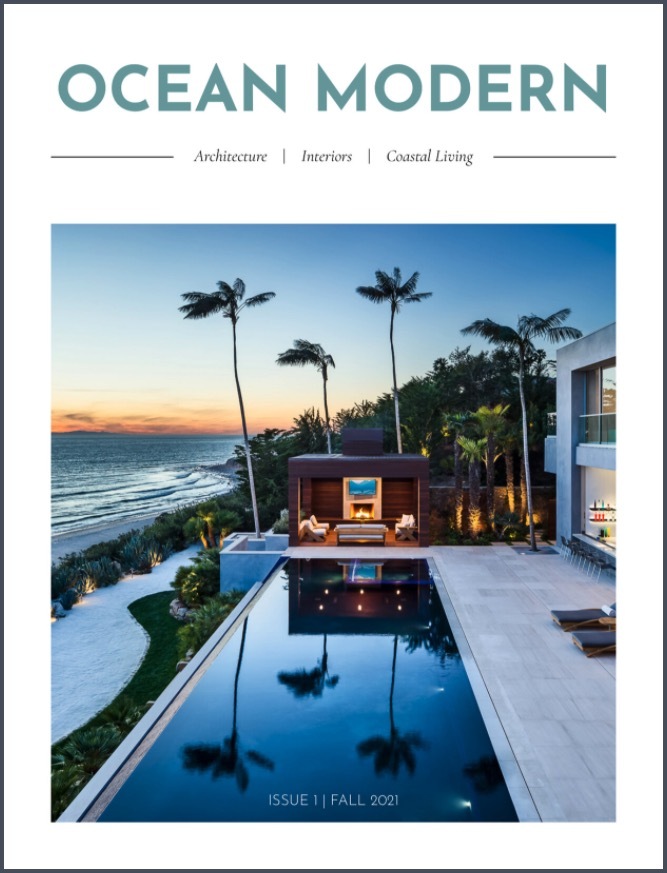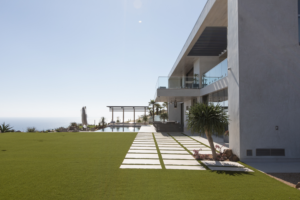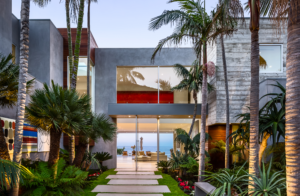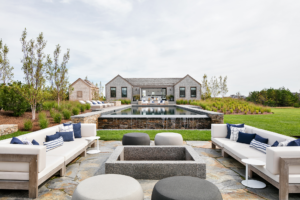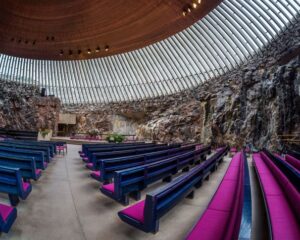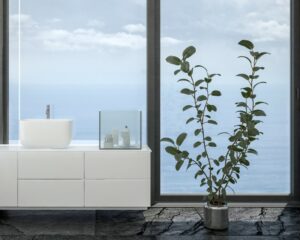How to successfully combine pieces from the past with contemporary elements while maintaining a coastal aesthetic

Image from https://floridadesign.com/florida-homes/eclectic-design-and-coastal-comfort-unite-in-naples-condo/
Striking a balance between old and new world sensibilities is largely what defines a successfully cohesive eclectic interior. While conventional wisdom dictates that each room in a home (or the entire property in aggregate) must adhere to a certain theme or style, eclecticism allows for the fusing of art movements, design programs, and materials while still maintaining harmony throughout the home. Expressing one’s personality, heritage, or experiences through a special collection of objects across periods and styles enriches the home with unexpected textures and exciting juxtapositions uncommon in many contemporary residences. The most important thing to remember when approaching eclectic interior design is to be intentional with the placements, shapes, and materials of each object.


Isobel Concrete Shelf, Image from Urban Outfitters and Large Antique Swedish Folk Art Wooden Bowl, ca. 1790, Image from 1stDibs
As explained by interiors expert Andi Pepper in conversation with Amanda Lauren for her article “A Misunderstood Style: Interior Designers On What Really Makes An Eclectic Space” in Forbes, “being eclectic is to mix different styles and eras together to create a cohesive space, but you can’t simply put everything together. You have to have a sense of commonality about it, with thought put into the design.” Eclecticism should not translate to messiness or disparate displays that have no throughway. Follow below for a series of tips and recommendations on how to mesh antiques, vintage pieces, and contemporary elements for a creative and captivating coastal home.
Uniting Antique and Contemporary Furniture
(19th Century French Provincial Oak Farmhouse Trestle Table Image from 1stDibs and Contemporary Warren Green Chair (wool upholstery, ash wood arms, and steel frame) by Omar de Biaggio, Image from CB2
Maintain a fresh feel throughout the home by juxtaposing antique furniture with contemporary pieces that respond well to the older materials. Interestingly, a completely modern aesthetic can be achieved in a contemporary house by mixing beautifully aged antique pieces with the contemporary. According to Engel Voelkers in the article “Seven Essential Tips for Mixing Modern and Antique Furniture” antique and contemporary pieces “should be united by at least one mutual attribute.” As such, keep in mind the lines and textures of each piece, regardless of origin. Carry the color, materials, angles, or shape of an antique piece over to a modern one to create an eclectic but streamlined aesthetic without any stuffiness or business.
For instance, pair this sharply angled 19th Century French Provincial Oak Farmhouse Trestle Table (pictured above, left) with dining chairs designed by contemporary Italian furniture maker Omar De Biaggio (pictured above right). The black steel frame of the dining chairs will respond well to the age-darkened wood of the French table, while the green wool upholstery will add a bit of richness and sophistication to the simple construction of the antique. Look for contemporary elements in each antique or vintage piece that is brought into the home before pairing it with a modern object. Many antique chairs, lamps, tables, ceramics, mirrors, and sofas reflect contemporary trends.
For example, the sharp geometric lines and glossy black ebonized surfaces of Art Deco furniture are forecasted to be some of the most popular design elements in 2020, with Architectural Digest predicting “a return to strong geometric forms,” referred to as “Neo-Deco.” Likewise, many materials featured in older pieces, from concrete and clay, to wood and metals, to shells and glass, are still incorporated into contemporary furniture, providing a link between countless different styles.
Considering the Surrounding Environment
1910 Jugendstil Table Lamp, Image from 1stDibs and Roar + Rabbit End Table, Image from West Elm
Depending on the surrounding environment and the house’s architecture, different cultures and periods may speak to the home. For instance, a mid-century modern house along the West Coast might call for Japanese antiques, while a historic Cape Cod in the Mid Atlantic might encourage the inclusion of French, Dutch, or Colonial American antiques. The Southern Coast of the US may look towards Central and South America. However, the location of the home may not necessarily dictate which elements fit well with the owner’s aesthetic. In this case, the general atmosphere intended for the home and the materials surrounding it should be considered more significant than a more literal sense of place.
Coastal residential architects often respond to the surrounding environment by sourcing local materials for building, so consider the way the home was built and the ethos behind its construction before filling it with a hodgepodge of pieces. Lastly, consider how the materials of antiques chosen for the home will respond to humidity, salt air, and other elements of the climate. Avoid certain pieces you might love but which will become degraded (tarnished, weakened, etc.) by high relative humidity; for instance, leave behind that special pair of antique gilt bronze curtain tiebacks or display them elsewhere, as the moisture from an open window will affect their patina.
Perfect Pairings
Antique Japanese Ceramics and Contemporary Californian Furniture
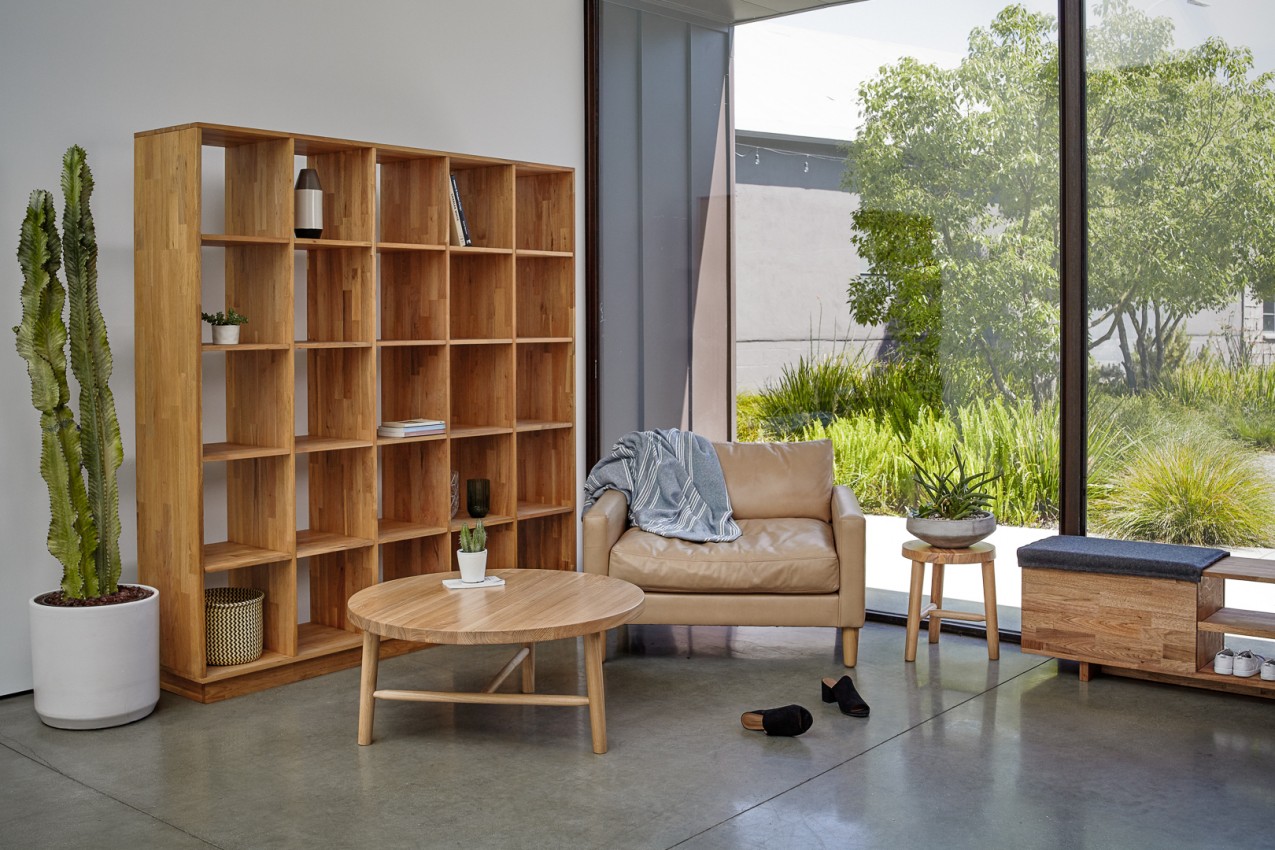
Meiji Period Satsuma Ware Vase, 19th Century Japan, Image from 1stDibs and English Walnut LAXseries 5×5 Bookcase, Image from LAXseries by MASH Studios
The bright, saturated colors of 19th century Japanese ceramics contrast beautifully with the pale, unvarnished woods common of contemporary California coastal design. The organic shapes and natural imagery of Meiji period Satsuma ware compliment the connection between the indoors and outdoors considered essential in West Coast design. The ,,Meiji period vase pictured above on the left offers a pop of coral enamel and a sparkle of metallic inlay to the matte surface of the walnut LAXseries 5×5 Bookcase by California company MASH Studios pictured above on the right.
Contemporary Japanese Vessel and Mid-Century Modern Danish Desk
Pot and Wood Abstract Sculpture Contemporary Zen Japonism Style by Norihiko Terayama, Japanese, 2017, Image from 1stDibs and Mid-Century Modern Danish Desk, ca. 1960s, Image from Etsy
Switch up proportions by introducing large vintage furniture to smaller contemporary decor or art pieces. Engel Voelkers recommends playing “with antique proportions to bring a sense of grandeur into a small contemporary space.” Pairing an experimental, thoroughly contemporary mixed-media piece with a more traditional one will add drama to any space by questioning convention.
The vessel pictured above on the left, designed by contemporary Japanese artist Norihiko Terayama and, according to 1stDibs, intended to “make decoration that defeats the function…the vase originally had,” actually combines the “body of an antique vase” with a block of plywood. The teak Danish mid-century modern desk pictured above on the right, designed by Kofod Larsen, would have been innovative during its time and still resonates with contemporary design programs because of its sharp lines and natural finish, two elements shared by the Japanese sculpture above.
18th Century British Card Table and Contemporary Nordic Nightstand Light
Georgian British, Sheraton period satinwood card table, ca. 1790, Image from Love Antiques and Contemporary Nordic Gold Nightstand Light Image from Arturest
Sheraton furniture, defined as a “late 18th-century neoclassical English furniture style, in vogue ca 1785 – 1820” is hallmarked by skinny, tapered legs, elaborate veneers inlaid with complicated contrasting wood patterns, and lightweight construction. The feet of tables, chairs, and other furniture pieces from this period were often capped with polished brass. Animal motifs, especially those common of Greek and Roman lore, can often be seen etched into the surfaces of tables from the period.
The Sheraton-Period Satinwood Card Table pictured above on the left exhibits a highly polished surface, delicate, spindly legs, and a half-moon top. Though intended as a card table, the antique piece functions perfectly in a modern setting as a nightstand. The shiny surface and curved shape of the table corresponds perfectly to the high-gloss exterior and oblong shape of the contemporary Nordic Gold Nightstand Light by Arturest (pictured above on the right). Simple in design and reflecting materials found in nature, the two pieces are well-suited to a coastal home.
Classical Greek Vessel and Contemporary Reclaimed Wood Floating Shelves
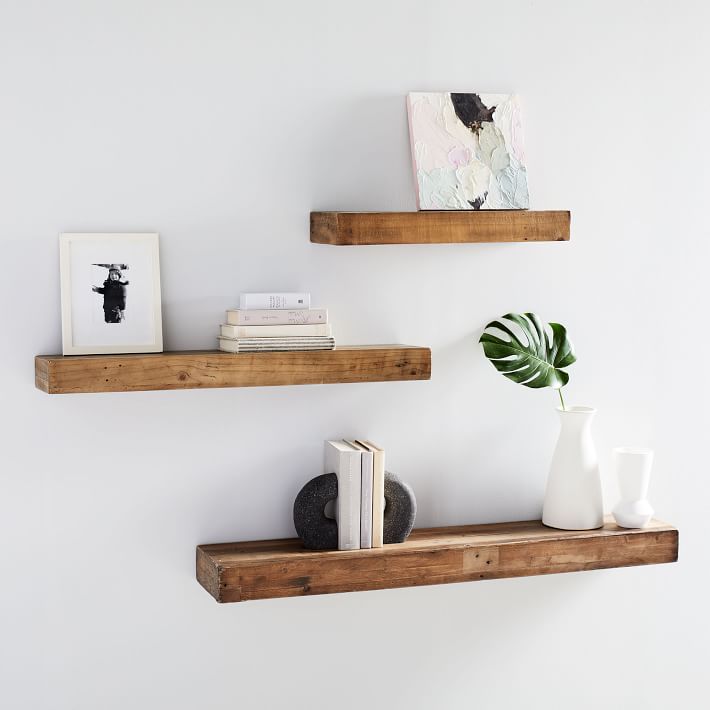
Classical Greek Vessel, ca. 19th Century, Image from 1stDibs and Reclaimed Wood Floating Shelf, Image from West Elm
Classical ceramics and sculptures from ancient Rome and Greece typically feature organic shapes and materials, many of which are still used today across regions and cultures. The Greek ceramic vessel pictured above on the left may be from a different time than the set of floating shelves pictured above on the right, but both can easily correspond to a contemporary coastal aesthetic.
With organic colors and shapes considered essential to interior design in 2020, the Greek vessel is an obvious choice, as it features a glazed mustard mouth and ribbed, soft beige body. The floating shelves pictured above on the right, made from weathered, reclaimed wood, are brand new pieces but still reflect the passage of time and the effects of nature. As such, they are an excellent pair, perfect for a contemporary coastal home.
1920’s Anglo-Indian Mother of Pearl Jewelry Box and Contemporary Vanity
Composed Vanity by Ladies & Gentlemen Studio, Image from Dims. and 20th Century Mother of Pearl Mosaic Jewelry Box, Anglo-Indian, ca. 1920, Image from 1stDibs
Designed to embrace simplicity and offer a no-frills experience that centers the user, the Composed Vanity retailed by Dims. Home and created by Ladies & Gentlemen Studio, is ideal for any contemporary coastal home given its streamlined aesthetic and gender neutral coloring. The modern vanity is intended to “imbue [the space] with warm minimalism, playful austerity, and simple sophistication,” according to its makers. Though available in a number of color combinations, the pairing pictured above (Sage and Powder) perfectly matches the color scheme of the Anglo-Indian Mother of Pearl Mosaic Jewelry Box pictured above on the right.
The hand-carved box, created in India in the 1920’s under English occupation, is “veneered throughout in carved and polished mother of pearl panels, opening to reveal the original pink silk lined interior.” Beautifully but rather subtly embellished with a material that changes as the light passes over it, the mother of pearl jewelry box is a fitting piece for any vanity, but is perfect in both form and function for the Ladies & Gentleman Vanity pictured above. The soft wood of the vanity and the natural mother of pearl shell of the jewelry box both reflect the organic environment of a coastal home.
Vintage French Mirror and Contemporary Glass Sink Basin
Vintage French Mirror by Roche Bobois, Image from 1stDibs and Murano Glass Specialty Vessel Bathroom Sink by Native Trails, Inc., Image from Wayfair
Both boasting simple but stunning organically shaped exteriors, with the mirror slightly oblong but with sharp corners and the sink basin with softly undulating sides, the Vintage French Mirror and Contemporary Glass Sink Basin pictured above offer understated coastal elegance. The mirror, dating to the 1970’s, was designed by French interiors retailer Roche Bobois, a company which remains active today. With its pale pink tessellated stone and brass inlay, the vintage piece is still very much in style and acts as the perfect foil to the Murano Glass Specialty Vessel Bathroom Sink by Native Trails, Inc. pictured above on the right.
